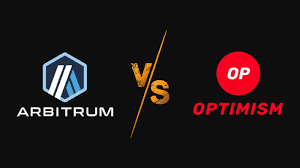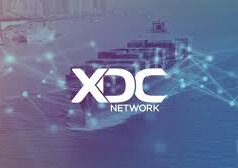As Ethereum’s scaling story unfolds, Arbitrum and Optimism stand out as two leading Optimistic Rollup chains. Both promise faster, cheaper transactions by settling off-chain while relying on Ethereum’s base layer for security. Yet, below the surface similarities lie some key differences in adoption, governance, performance, and ecosystem strategy. Let’s dive in to see which L2 might dominate—or why both can thrive.
1. The Lay of the Land: What Makes Them Similar… and Unique
Both rollups share key traits:
- EVM compatibility, seamless smart contract deployment, and support for existing wallets like MetaMask.([turn0search1], [turn0search6])
- They reduce Ethereum congestion by batching transactions and posting state roots on-chain, preserving security via fraud proofs.([turn0search6], [turn0search1])
But they diverge in important ways—how they handle fraud, decentralization, and roadmaps.
2. Adoption & Ecosystem Size: Arbitrum’s Head Start
| Metric | Arbitrum | Optimism |
|---|---|---|
| TVL | ~$3.9B (or $2.18B depending on source) (Messari, coinbrain.com) | ~$532M–$1.28B (Messari, coinvoice.net) |
| Daily Transactions / Users | ~3.37M Tx vs 325K active addresses (Messari) | ~2.15M Tx vs 71K active addresses (Messari) |
| Protocols & dApps | ~205 protocols (pexx.com, coinvoice.net) | ~105 protocols (pexx.com) |
Arbitrum consistently leads in daily activity, TVL, and ecosystem size. A Reddit user noted:
“Over 400 Ethereum projects have already deployed on Arbitrum One… developer adoption … aside from Ethereum itself.” (Reddit)
Arbitrum continues to command a dominant share among optimistic rollups. As one comparison shows:
“Arbitrum leads in total value locked at $2.6 billion… Optimism takes second with $2.41 billion… Arbitrum holds ~55% market share.” (Reddit)
3. Technical Mechanics: Fraud Resolution & Fees
Optimism
- Uses a single-round fraud proof: disputes trigger EVM execution of the entire challenged transaction—simple and fast but gas-heavy. (Across Protocol, Deribit Insights)
- Fees are slightly higher in dispute scenarios. (Across Protocol)
Arbitrum
- Implements a multi-round interactive fraud proof (via recursive bisection), streamlining on-chain gas costs by narrowing the disputed code. (Across Protocol, Deribit Insights)
- This can result in lower fees overall, albeit with more complex logic. (Deribit Insights)
4. Governance, Vision & Upgrades
Arbitrum
- Governed through the Arbitrum DAO, with treasury control and decentralization on the horizon. (Nownodes, CoinMarketCap)
- Aggressively expanding ecosystem via Arbitrum Nova (low-fee sidechain), Orbit (L3 tooling), and Stylus (Rust/C++ contract support). (CoinMarketCap)
Optimism
- Focused on public goods and developer support via the Optimism Collective. (Nownodes, CoinMarketCap)
- Building out a Superchain of interoperable chains using the OP Stack, including an alliance with Coinbase’s Base. (Messari, CoinMarketCap)
5. UX and Developer Experience
Both platforms are EVM-compatible, but they differ in speed, fee structure, and design intent.
Optimism
- Offers slightly faster block times (reports suggest ~2s vs Arbitrum’s ~13s). (chain.compare)
- Developer onboarding is smooth, especially for Ethereum-first projects.
- UX often praised as clean and intuitive. (Reddit)
Arbitrum
- Lower fees and high stability make it attractive for frequent transactions. (Across Protocol, coinbrain.com)
- Community members often say it feels more mature and wallet-friendly: “Arbitrum is consistently faster and marginally cheaper… more secure since they have working fraud proofs.” (Reddit)
6. Emerging Challenges & Broader Perspective
While adoption is up, some broader headwinds linger:
- MEV (Miner/Maximal Extractable Value) trends show that Optimism (and Base) consume over 50% of gas via speculative MEV, compared to 7% on Arbitrum—indicating differing behaviors around blockspace usage. (arXiv)
- Liquidity fragmentation across L2s remains a concern. Research proposes token standards like UAT20 that could unify liquidity across rollups. (arXiv)
- There’s growing debate on L2 adoption fatigue, as UX and complexity remain barriers for mainstream users. (Reddit)
7. The Future: Two Visions Taking Shape
- Arbitrum leans toward deep ecosystem expansion with flexible rollups, Rust/C++ support, and decentralized governance infrastructure.
- Optimism gears toward a modular, interoperable Superchain ecosystem, backed by institutions like Coinbase and focused on public goods and developer alignment.
8. Final Take: Which Rollup Will Dominate?
Arbitrum currently holds the edge in adoption, activity, fees, and ecosystem momentum. Its multi-pronged roadmap and performance leadership make it a formidable leader.
Optimism, however, is carving out a strategic niche. With its Superchain vision, governance-first alignment, and clean UX—it’s positioning itself as a platform for long-term interconnected growth and developer-first principles.
In truth, the L2 landscape may not favor a single winner. As Ethereum grows and modularity expands, both Arbitrum and Optimism may thrive— serving different segments of builders, users, and applications:
- Choose Arbitrum if you want mature tooling, low fees, robust DeFi ecosystem, and flexible contracts.
- Choose Optimism if you align with public-good funding, modular governance, and building within an interoperable Superchain architecture.
They’re not just dueling rollups—they’re co-defining how Ethereum’s scaling future unfolds.
Sources
- Comparative metrics & ecosystem data: (Messari, coinbrain.com, coinvoice.net)
- Technical differences in fraud proofs & fees: (Across Protocol, Deribit Insights)
- Governance & roadmap details: (Nownodes, CoinMarketCap)
- Developer experience comparisons: (chain.compare, Reddit)
- Community quotes & sentiment: (Reddit)
- MEV and liquidity fragmentation research: (arXiv)



























